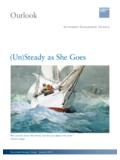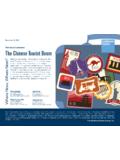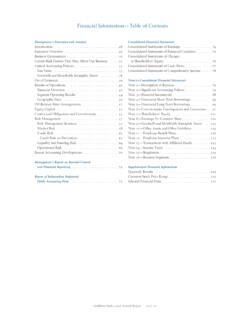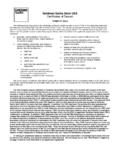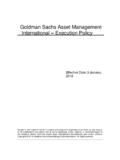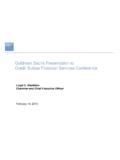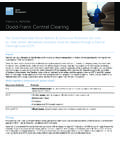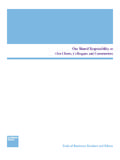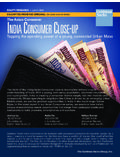Transcription of The World Cup and Economics 2014 - …
1 The World Cup and Economics 2014 The World Cup 2014 Dream Team (as selected by you!) Manuel Neuer (GER) Bayern Munich The Bayern Munich keeper was a comfortable choice in goal beating Iker Casillas into second place. Sergio Ramos (ESP) Real Madrid The Real Madrid defender can play central defender as well as right back, and is also the highest-scoring defender in La Liga. Dani Alves (BRA) Barcelona One of the four players to keep his slot from our 2010 Dream Team, the Brazilian again comes in at right back. Thiago Silva (BRA) Paris Saint-Germain The Brazilian central defender who will be hoping to play in this World Cup after missing out in the 2010 tournament. Philipp Lahm (GER) Bayern Munich The most popular defender, chosen by almost half of you. With Alves in the team, the utility player has reverted to left back for us. Andr s Iniesta (ESP) Barcelona The most popular midfielder, who scored the winning goal for Spain in the 2010 World Cup final against the Netherlands.
2 Eden Hazard (BEL) Chelsea The lightning-fast Hazard is the first Belgian ever to play for our Dream Team. Neymar (BRA) (Neymar da Silva Santos Junior) Barcelona Neymar replaces Rooney from our 2010 Dream Team. Lionel Messi (ARG) Barcelona The first name on the team sheet, Messi was chosen in almost 64% of teams. Along with Alves, Rib ry and Ronaldo, he is one of the four players from our 2010 Dream Team. Franck Rib ry (FRA) Bayern Munich Along with Alves, Ronaldo and Messi, the Bayern Munich midfielder is one of the four players who keep their place from our 2010 Dream Team. Cristiano Ronaldo (POR) Real Madrid Despite winning FIFA s Ballon D Or in 2013, Ronaldo was pipped to the post as most popular player in our 2014 Dream Team by Lionel Messi. But only three votes separated the World s two best players. Here is our 2014 Dream Team, selected by you the client!
3 Once again the team was selected in a strict 4-3-3 formation, which means that some players who otherwise might have appeared didn t quite make it. For example, Yaya Toure was runner-up for the midfield even though he received almost 200 fewer votes than striker Luis Su rez. In any case, our Dream Team would clearly have no problems scoring. Neuer (GER) Ramos (ESP) Silva (BRA) Lahm (GER) Ronaldo (POR) Iniesta (ESP) Rib ry (FRA) Messi (ARG) Hazard (BEL) Neymar (BRA) Alves (BRA) Investors should consider this report as only a single factor in making their investment decision. For Reg AC certification and other important disclosures, see the Disclosure Appendix, or go to May 2014 The World Cup and Economics 2014 goldman sachs Global Investment Research 1 Groups and Key Statistics TeamOddsFIFA World Ranking GS ProbabilityTeamOddsFIFA World Ranking GS Probability Group A Group EBrazil3 Group B Group FSpain13 and Herzegovina125 Group C Group GColombia22 te d Ivoire125 Group D Group HUruguay28 Rica3000 Republic300 : , May 20, 2014 ; FIFA, goldman sachs Global Investment Research The World Cup and Economics 2014 Welcome to our 2014 book on the World Cup and Economics .
4 This is our fifth edition since the 1998 Paris competition and the first without Jim O Neill, who pioneered the previous versions over all those years. While it is hard to match Jim s football craziness, the group globally is still full of fans of the beautiful game. And it is now possible to acknowledge open support for teams such as Liverpool and Chelsea. We present this guide as a companion to the upcoming Rio Cup, with the usual unnatural mix of football and Economics . We have turned again to famous guest contributors to help guide you through the competition. Franz Beckenbauer, German legend and World Cup Winner as both player and coach, talks about what it takes to succeed. Four of Chelsea s Brazilian players Oscar, Ramires, Willian and David Luiz talk about the excitement and pressure of playing for the host nation.
5 Angel Ubide of DE Shaw talks about the intersection of finance and football, looking at the impact of Spain s crisis on the restructuring of Spanish football. And Paulo Leme, now Chair of goldman sachs Brazil, discusses the parallels between the economy and football in Brazil. We also include our latest version of the World Cup Dream Team, selected by you, our clients from around the World . Based on the 1,700 votes submitted, Dirk Schumacher has narrowed the list down to a line-up of 11. Alongside our regular country pages from our economists around the World , we have been busy working on beefing up our analytical capability. We have invested much more intensively this year in a model of the probability of success in a match between any two given teams, based on their track record and characteristics.
6 Jan Hatzius, Jari Stehn and Donnie Millar use this to map probabilities of progress through the competition both game by game and to the final. Excitingly, we will be able to update the output as the game comes in. Brazil will be pleased to see it emerges as the clear favourite, helped by a home team advantage, but the likely semi-finalists are Brazil, Germany, Argentina and Spain. Peter Oppenheimer and our Portfolio Strategy team have also looked at the links between World Cup performance and equity markets and the honeymoon bounce that follows the winners in the weeks after the final. Yu Song and Vishal Vaibhaw look at the two missing giants India and China from the World Cup line-up and their hopes for the future. Jos Urs a and Kamakshya Trivedi highlight some key macro trends from the history of World Cups, including disinflation in goals and the importance of land as a factor of production in World Cup victories.
7 Seriously. We could only wish for this level of dedication from our team around the World to their regular tasks. We hope you enjoy the read, the World Cup and these challenging markets. May the best team win! Dominic Wilson and Jan Hatzius May 27, 2014 May 2014 The World Cup and Economics 2014 goldman sachs Global Investment Research 2 The World Cup and Economics 2014 .. 1 A Statistical Model of the 2014 World Cup .. 3 The World Cup and Equity Markets .. 8 An interview with Franz Beckenbauer .. 10 An interview with Chelsea s Brazil quartet: David Luiz, Ramires, Oscar and Willian .. 12 When will China and India Play in a World Cup Final? .. 14 Algeria .. 16 Argentina .. 17 Australia .. 18 Belgium .. 19 Bosnia and Herzegovina .. 20 Brazil (includes a contribution from Paulo Leme, Chairman of goldman sachs Brazil).
8 21 Cameroon .. 24 Chile .. 25 Colombia .. 26 Costa Rica .. 27 C te d Ivoire .. 28 Croatia .. 29 Ecuador .. 30 World Cup Groups, Calendar and Venues England .. 31 France .. 33 Germany .. 34 Ghana .. 35 Greece .. 36 Honduras .. 37 Iran .. 38 Italy .. 39 Japan .. 40 Korea .. 41 Mexico .. 42 Netherlands .. 43 Nigeria .. 44 Portugal .. 45 Russia .. 46 Spain (includes a contribution on The restructuring of Spanish football by Angel Ubide) .. 47 Switzerland .. 51 Uruguay .. 52 USA .. 53 World Cup trends viewed through a (light-hearted) economic lens .. 54 World Cup Trivia .. 58 Disclosure Appendix .. 60 Contents May 2014 The World Cup and Economics 2014 goldman sachs Global Investment Research 3 Today we introduce our statistical model for predicting the outcome of the 2014 World Cup.
9 At a very high level, our approach is as follows: We construct a stochastic model that generates a distribution of outcomes for each of the 64 matches of the 2014 World Cup, from the opener between Brazil and Croatia on June 12 in S o Paulo through the final on July 13 in Rio de Janeiro. The predictions for each match are based on a regression analysis that uses the entire history of mandatory international football matches , no friendlies since This gives us about 14,000 observations to estimate the coefficients of our model. The dependent variable in the regression analysis is the number of goals scored by each side in each match. Following the literature on modelling football matches, we assume that the number of goals scored by a particular side in a particular match follows a Poisson The explanatory variables in the regression analysis are as follows: 1.
10 The difference in the Elo rankings between the two teams. The Elo ranking is a composite measure of national football team success that is based on the entire historical track record. Unlike the somewhat better known FIFA/Coca-Cola rating, the Elo rating is available for the entire history of international football matches. Statistically, we find that the difference in Elo rankings is the most powerful variable in the model. 2. The average number of goals scored by the team over the last ten mandatory international games. 3. The average number of goals received by the opposing team over the last five mandatory international games. 4. A country-specific dummy variable indicating whether the game in question took place at a World Cup. This variable is meant to capture whether a team has a tendency to systematically outperform or underperform at a World Cup.
